














|
JAN OLIESLAGERS "De Antwerpsche Duivel" 1904 With the newly developed 90° - 7 hp V-twin, Olieslagers competed with the best of Europe in the class under 50 kg. During the first world championships, organised on the race oval of the Parc des Princes - Paris, Olieslagers ended first of his qualifing series but lost in the finals due to a broken crankshaft. Later, the same mechanical problems prevented Olieslagers to take part in the finals of Grand Prix of Vincennes. Olieslagers returned to Antwerp and participated on the oval of the Zurenborg with the V-twin. This time he completed and won both races of respectively 5000 m and 10 km in a little under 100 km/hr. On 15 July 1904, the annual Semaine de Ostende started for all categories of motocyclettes and cars. Different tests over 10 km, the mile "départ arrêté" and the mile "lancé" were disputed. The race took place on a straight between Oostende and Torhout. Olieslagers competed only in the class less than 50 kg and only on the mile "départ arrêté". To save weight, he mounted very narrow Dunlop tires that could withstand only 5 km of racing on the machine. After the push-start, the bike rattled at 2000 rpm towards the finish. Three quarters of the mile were completed at the average of 97,512 km/hr and the last quarter at 109 km/hr. This means that the average speed over the mile, exceeded just the 100 km/hr. The whole race took 59 sec 2/5 from start to finish and in the book about Jan Olieslagers, the author states that this was a new world record. On 24 July, Olieslagers participated with the V-twin in the Circuit des Ardennes. He ended sixth. On 28 and 30 July , he ended first in respectively the Semaine de Spa and an international race on the oval of Zurenborg and on 14 August he became champion of Belgium raced on the oval of Zurenborg - Antwerp. Later that year, the famous French coureur Lamberjack challenged Olieslagers over the claimed 100 km/hr during the Week of Ostend. On 2 October, Lamberjack lost the race against Olieslagers, over the 1000 m, in Dourdan - France. 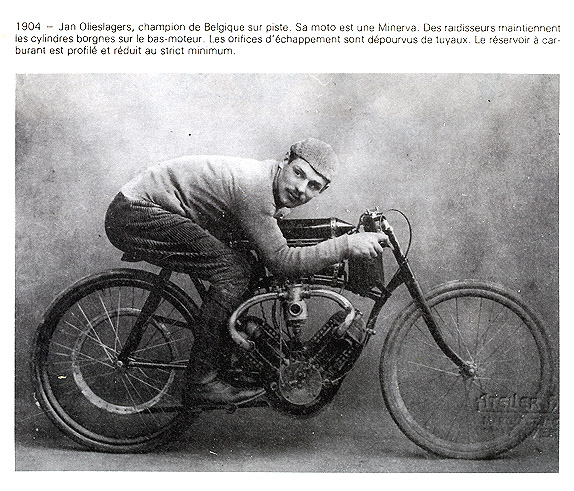 Olieslagers became again champion of Belgium on the Zurenborg - Antwerp circuit. This year, the world championships were organised on the oval of Zurenborg - Antwerp. Olieslagers ended first of his series, during the qualifing races. Four motorcyclettes had to race over 5000 m during the finals on 24 July. Due to an accident one coureur was eliminated. Olieslagers headed the race on the last km with one round (400 m) when the back tire punctured and ended the race for him. The coureurs Anzani and Pernette finished respectively first and second. Olieslagers continued to race motorcycles until WW I, but developed in the mean time another pioneer passion: flying. This, however, is another story. 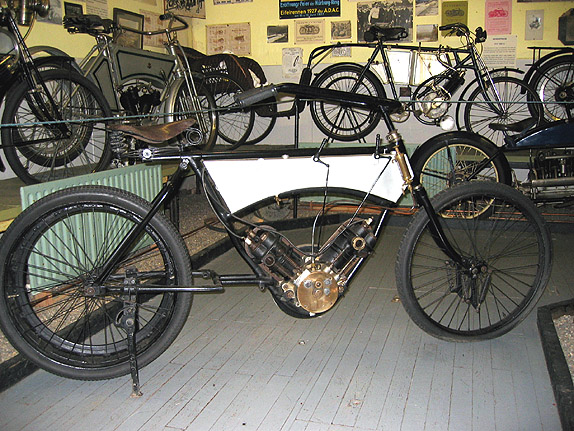 The 1904 90° V-Twin. ISLE OF MAN Murray's Motorcycle Museum - Snaefell Mountain. The museum was situated near the top of the Snaefell Mountain, almost in the middle of the island and often cloaked by clouds. More than 120 motorcycles covering the late 1800's through to modern times stole the show. Some of the displayed motorcycles raced the annual TT on the island and outside is the statue of the King of the Mountain: Joey Dunlop. 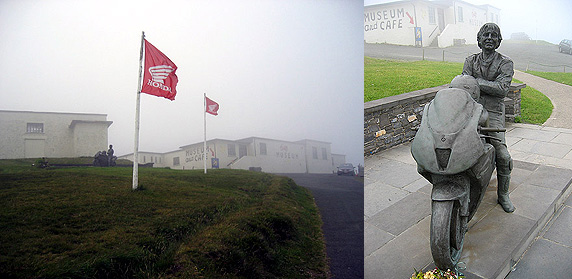 Altough Minerva motorcycles never raced on the island (Minerva cars did), the above described motorcycle was on display in the museum of Peter Murray. The father of Peter Murray bought the motorcycle in the U.K. The motorcycle was modified with high handlebars, a complete tank, suspension and two back wheels for pace-making. The rest of the frame and forks seem to be original. During our visit, Peter was very helpfull and went to great lenghts with us to find construction numbers or other markings. However, no numbers or markings were found. The book about the life of Jan Olieslagers suggests that two of these machines were produced. 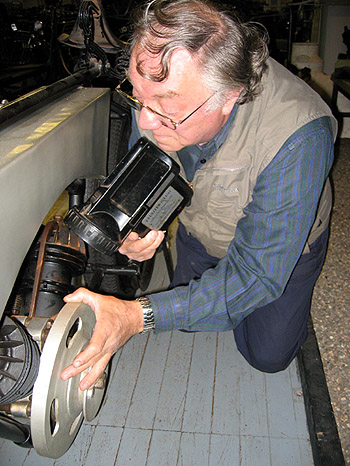 Peter Murray, looking for construction numbers. 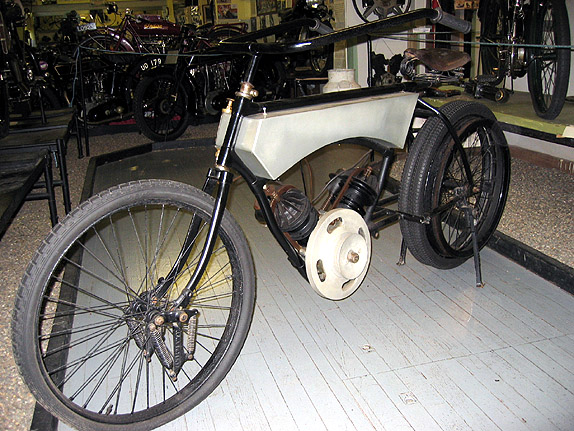 Compare the flywheel on this picture and the one below. 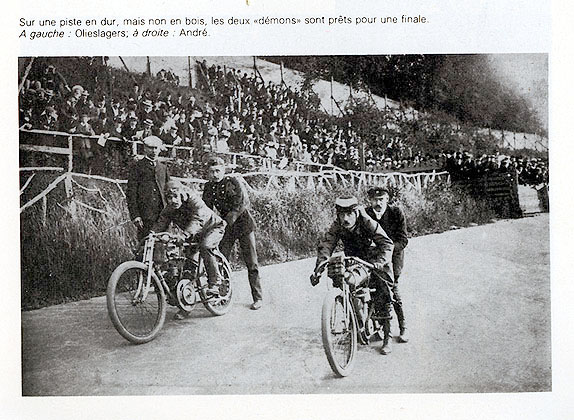 1907: "The Devil from Antwerp" with "The Devil from Brussels" (on Saroléa V-Twin). |
